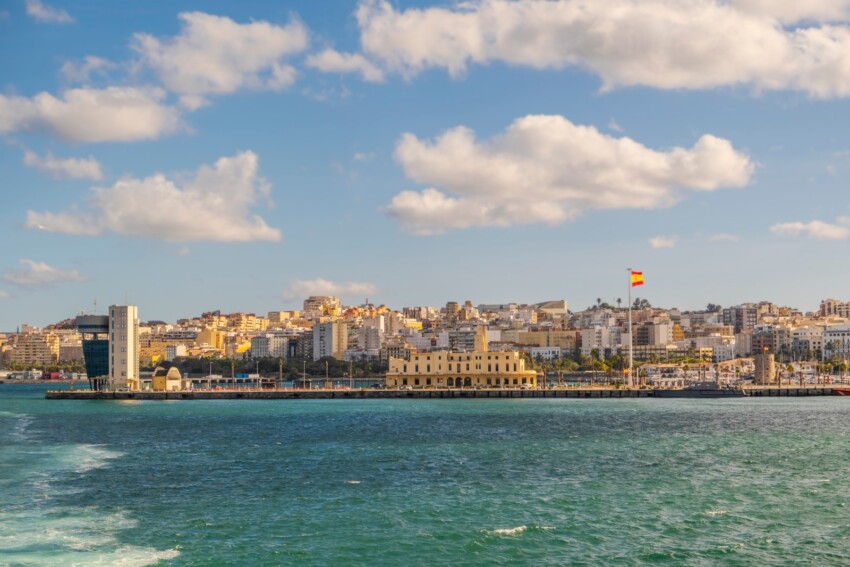

Disputed for centuries by Spaniards, Moroccans and Portuguese, administratively Ceuta is now an autonomous city of Spain on North African territory. In its soul, it is a fascinating mix of cultures and populations, a Spain with Moroccan touches, always a little undecided between tapas and couscous. Geographically, it is the northern tip of Africa, always looking towards Gibraltar.
The old part of the city is spread out on a peninsula jutting out into the Mediterranean Sea and is full of places ideal for a relaxing break from the museums and monuments that tell the peculiar history of this strategic outpost. When the heat becomes oppressive, you can cool off with a swim in the sea or in the salt water of the Maritime Park’s artificial lakes.
At sunset, the city’s modern buildings are tinged with pastel colours and it is not difficult to let your thoughts wander to distant and mysterious lands. After all, the border is only a few minutes away by bus.
Viewpoints, parks, squares, palaces, museums: there is quite a lot to see in Ceuta!
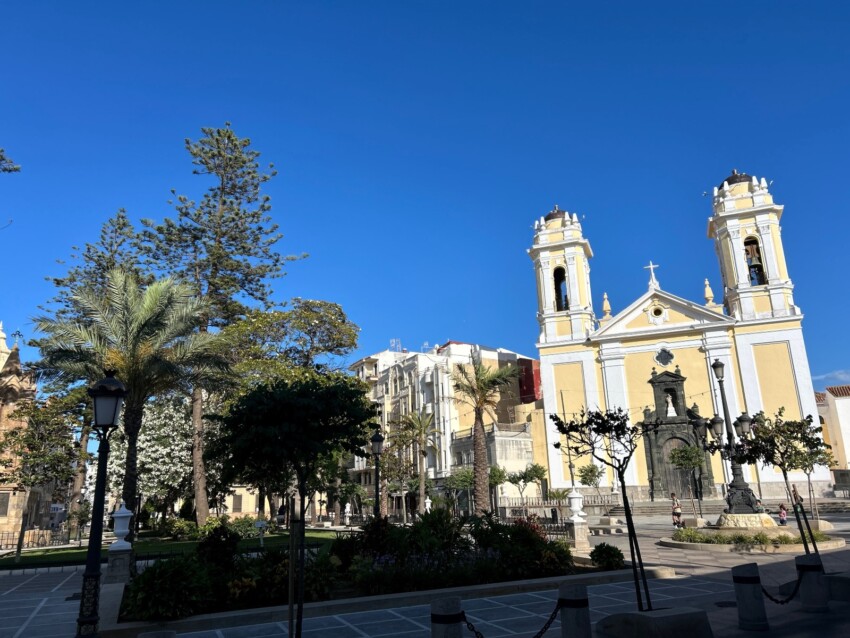
The nerve centre of Ceuta’s city life is the Square of Our Lady of Africa, in the heart of the historical part, dominated by the Monument to the Fallen of the African War of 1859-60, a 13-metre-high neo-Gothic monolith that includes a crypt where some Spanish soldiers who died in the war are buried.
It is an elegant square shaded by well-kept palm trees and lined with beautiful palaces and churches. The most beautiful are the Sanctuary of Our Lady of Africa, easily recognisable by its bright yellow walls, the Palacio de Asamblea and the Cathedral of Santa Maria de la Assumption.
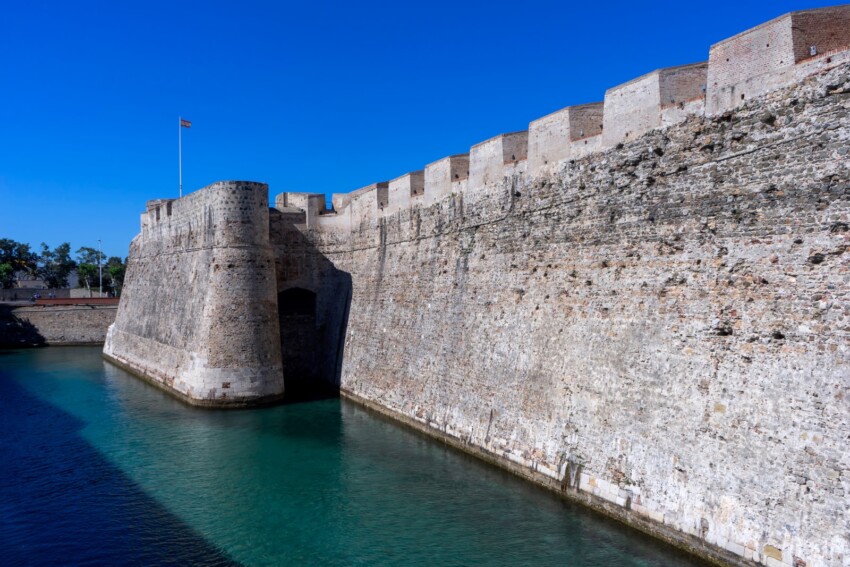
The Royal Walls are Ceuta’s most famous and impressive historical building. They represent a complex defence system whose original core dates back to the 5th century; over the centuries it was extended with new defensive lines, moats and tunnels. Inside the walls are several rooms that house the Museum of Fine Arts and temporary exhibitions.
An original museum you can visit in Ceuta is the Museum of the Legion, dedicated to the Spanish military corps established in 1920. The museum collection includes relics, weapons and uniforms that testify to the importance of the Legion in the history and culture of Moroccan Spain.
The museum is curated by the Legion itself, so the exhibition is not exactly objective: much space is given to the lights and little to the shadows of this slice of Spanish history, nevertheless it is an interesting museum worth a visit.
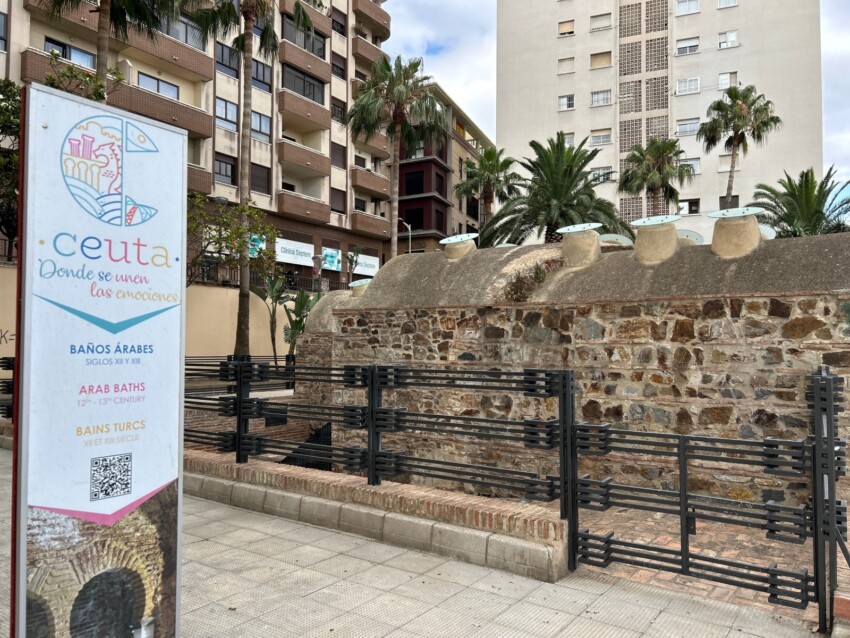
The Arab baths of Ceuta date back to the 11th or 13th century and were used for personal hygiene but also for religious purification rituals; they were also a place to meet and socialise, similar to the Roman baths. The barrel vaults of the two buildings are well preserved, while unfortunately the original marble cladding has been lost.
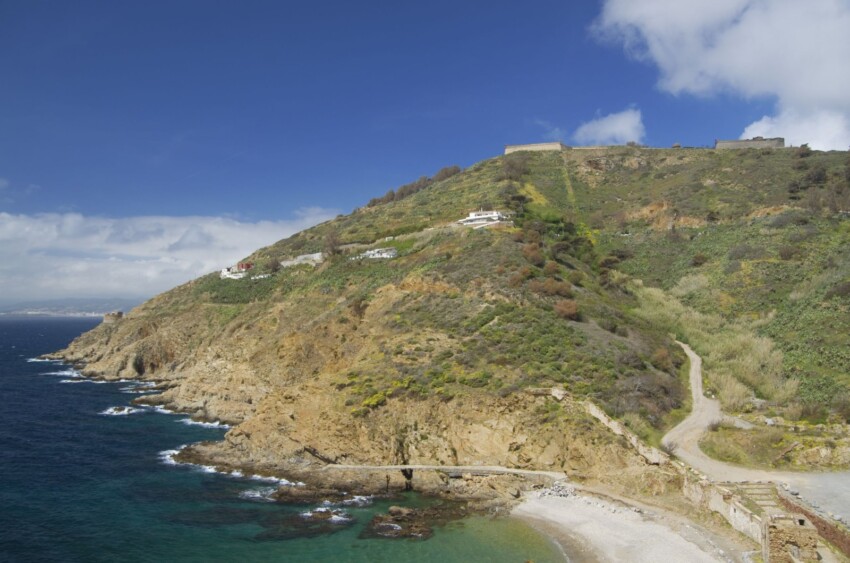
For splendid views of the city and the sea, climb to the viewpoint of Monte Hacho, a hillock that occupies the end of the peninsula on which the centre of Ceuta is built. It is reached by a 3.5 km walk but many tourists prefer to avoid walking uphill and take a taxi to the Mirador de San Antonio, about two-thirds of the way up, and then continue on foot.
The hill is dominated by the Monte Hacho Fortress, of Byzantine origin, which still houses a military base and is dotted with viewpoints and bastions. Push on to the Castillo del Desnarigado and on the way back rest in the greenery of the Parque de San Amaro.
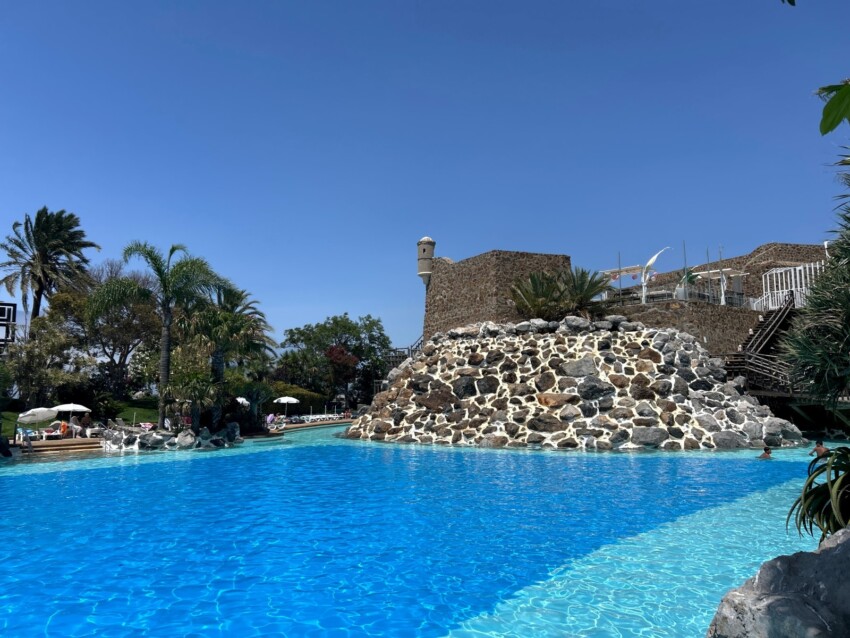
The Mediterranean Maritime Park is the pride of modern Ceuta: this vast man-made park in the centre of the city is the latest work of renowned artist and architect César Manrique.
Opened in the 1990s, it is a refreshing oasis much loved by the inhabitants of Ceuta. It includes three artificial lakes, small islands, waterfalls and a botanical garden with species from all over the world: a place that, despite having nothing natural about it, will make you dream of being in a lush forest because of the abundance of water and vegetation. It is perfect for sunbathing, swimming, walking.
The Museo de la Basilica Tardorromana exhibits a prestigious collection of local artefacts, but visitors are more impressed by its location than by the exhibits. It is an atmospheric underground museum that stands on the site of an ancient basilica and whose architecture is perfectly integrated with the ancient remains.
If you stay longer in Ceuta, don’t limit yourself to the top attractions: there are other interesting things to see in the city, including:
In the following map you can see the location of the main places of interest mentioned in this article.
Ceuta is not famous for its beaches, but those who want to break up a day of visiting museums and monuments with a refreshing dip can do so at Playa de la Ribera or Playa del Chorillo, the two city beaches. They are not particularly attractive, but on the other hand they are well-maintained and easy to reach.
Ceuta is not a tourist destination so the number of hotels is limited, but surprisingly it is possible to find accommodation for all budgets from cheap, traditional hostels to comfortable 4-star hotels. The majority of hotels in Ceuta are concentrated near the beaches.
It is advisable to book in advance as the few hotels in the city often sell out.
Ceuta has no airport and can therefore only be reached by sea or land.
Every day from the city of Algeciras in Andalusia there are several fast ferries to Ceuta that take you to your destination in only 30 minutes. There are also slower ferries that also carry cars, but in this case the sea crossing is much longer: one to two and a half hours.
To get to Ceuta from Morocco, the easiest way is to take a grand taxi (collective taxi) from Tetouan, a city linked by public transport to more important locations; it is more difficult to find grand taxis to Ceuta from more distant locations, such as Tangier or Chefchaouen, and therefore cannot always be relied upon. An alternative is to reach Fnideq from Tangier and from there continue by grand taxi.
There is a local bus that runs from the centre of Ceuta to the border post with Morocco, with fairly frequent trips (about every 10 minutes).
Arriving in Ceuta by boat from mainland Spain does not require a passport as you remain within the territory of the European Union. If, on the other hand, you want to travel to Morocco from Ceuta, your passport becomes compulsory and you will have to show it at the border; the visa to enter Morocco is made upon arrival.
What's the weather at Ceuta? Below are the temperatures and the weather forecast at Ceuta for the next few days.
Ceuta is a Spanish enclave in Africa, in Moroccan territory to be precise. It lies across the Strait of Gibraltar, on a small peninsula.